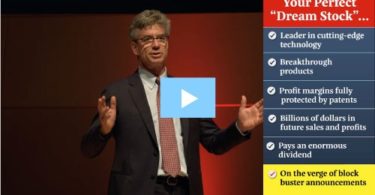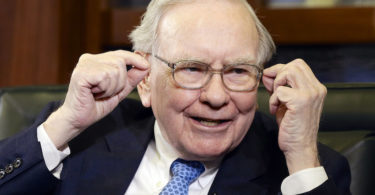The AI Partnership with PayPal – A New Catalyst for Alphabet
Alphabet Inc. (NASDAQ: GOOGL) has announced a multi-year strategic partnership with PayPal, aimed at integrating advanced AI into shopping and payments across both companies’ platforms ([1]). Under this deal, PayPal’s offerings (like its branded checkout, Hyperwallet, and payout services) will be embedded into Google’s products, while Google’s artificial intelligence will enhance PayPal’s services and security ([1]). In practice, this means Google will “more deeply integrate PayPal’s innovative payment capabilities” across services such as Google Cloud, Google Play, and Google Ads ([1]) ([2]). PayPal, in turn, will use Google’s AI expertise to improve user experience and fraud protection on its platform ([1]). Notably, PayPal will also become a key payment processor for card transactions on Google’s ecosystem, including cloud services and app store payments ([1]) ([2]). This collaboration arrives on the heels of PayPal’s recent ventures into AI (e.g. partnering with startup Perplexity), signaling an aggressive push by PayPal to innovate in “agentic commerce” – AI-driven shopping assistants ([1]).
- Keep cash and bonds
- Trust the system will fix itself
- Gold & Bitcoin hedges
- High-quality inflation-resistant stocks
The market has reacted positively to this news. PayPal shares jumped over 3% after the announcement ([1]), reflecting investor optimism about the tie-up. For Alphabet, the deal underscores its strategy of leveraging AI to strengthen core businesses and partner with established players rather than going it alone. It also potentially boosts Google Cloud’s client roster – PayPal will expand its use of Google Cloud to power its next-generation payments platform ([2]), which could translate into a meaningful cloud revenue win for Alphabet. Overall, this AI partnership is an incremental catalyst that plays to Alphabet’s strengths (AI and vast platforms) and could fortify its presence in digital commerce. With Alphabet’s stock recently surging to record highs on AI optimism and a favorable antitrust ruling ([3]), this development adds yet another reason investors are taking notice – and why acting sooner rather than later might be prudent.
Dividend Policy, Shareholder Returns & Yield
One of the notable shifts in Alphabet’s capital return policy is the initiation of a cash dividend in 2024. Historically, Alphabet avoided paying dividends, preferring to reinvest in growth and execute share buybacks. However, on April 25, 2024, the Board declared the company’s first-ever cash dividend of $0.20 per share on all classes of stock ([4]). That initial quarterly dividend was paid on June 17, 2024, totaling approximately $2.5 billion in cash returned to shareholders ([4]). Alphabet has stated its intention to continue paying regular quarterly dividends, subject to board approval ([4]). At the current quarterly rate ($0.20), the annualized dividend is $0.80 per share – which equates to a yield of roughly 0.5–0.7% based on recent share prices. This yield is modest, reflective of Alphabet’s focus on growth; by comparison, the S&P 500’s average dividend yield is around ~1.5–2%. The dividend payout ratio is extremely conservative – with less than 15–20% of annual earnings being paid out – leaving ample room for increases or special dividends in the future if desired.

“The only company I recommend for your Gold & Silver needs is American Hartford Gold.”
— Bill O'Reilly
In addition to dividends, Alphabet continues to aggressively repurchase shares as a way to return capital. The Board authorized a massive $70 billion share buyback program in 2023, and as of mid-2024 about $74.9 billion remained available under its repurchase authorizations ([4]). In April 2025, Alphabet again announced a fresh $70 billion stock buyback plan, signaling ongoing commitment to share repurchases ([5]). These buybacks have a tangible impact: they reduce the share count (supporting earnings per share growth) and demonstrate management’s confidence in the company’s valuation. For example, Alphabet repurchased approximately $59 billion of its stock in 2022 and 2023 combined ([6]) (no cash dividends were paid in those years). Now with a small dividend in place and continual buybacks, Alphabet is balancing growth reinvestment with shareholder returns. Notably, free cash flow generation remains robust – even after a recent surge in capital expenditures (more on that below), Alphabet still produced tens of billions in annual free cash flow, easily covering the new dividend obligations many times over. In short, while Alphabet is not a high-yield income stock, it has begun to reward shareholders directly. The initiation of a dividend (after years of investor speculation) is seen as a positive signal of financial strength and maturity, albeit at a token yield for now.
(Note: AFFO/FFO metrics are not applicable to Alphabet’s business model – those are used for real estate or similar firms. Instead, Alphabet’s capacity to fund dividends is better gauged by traditional earnings or free cash flow measures, where the company excels.)
Leverage, Debt Maturities & Coverage
Alphabet’s balance sheet remains one of the strongest among large-cap companies, providing significant financial flexibility. As of June 30, 2024, Alphabet held about $100.7 billion in cash, cash equivalents, and marketable securities on its balance sheet ([4]). Against this, the company has a relatively small amount of debt – approximately $14.3 billion in total debt outstanding (with about $13.2 billion classified as long-term debt) ([4]). This means Alphabet is in a net cash position of roughly $86 billion, an enormous war chest that can fuel continued investments, acquisitions, and shareholder returns. In fact, Alphabet’s cash alone far exceeds its total liabilities, and current assets are more than double current liabilities ([4]) ([4]) – a clear sign of a fortress-like balance sheet.
The debt that Alphabet does carry is long-dated and low-cost. The company’s outstanding senior notes mature at various dates from 2025 through 2060, with very low coupon rates between 0.45% and 2.25% ([4]). These fixed-rate obligations were issued in past years when interest rates were extremely favorable, resulting in minimal interest expense. For example, in the first half of 2024 Alphabet’s interest expense was only $161 million, while it earned $2.15 billion in interest income on its cash holdings ([4]) ([4]). In other words, the company’s interest income from its cash exceeds the interest it pays on debt – an enviable position that effectively gives it a “negative net cost” of debt financing. Even using operating earnings, interest coverage is extraordinary: Alphabet’s half-year net income of $47.3 billion dwarfs the $161 million of interest expense (≈293× coverage) ([4]) ([4]). There is no concern about Alphabet meeting its debt obligations.
Looking at maturities, Alphabet had a small $1 billion note come due in 2024 (classified as current portion of debt at 2023 year-end) which has since been repaid ([4]). The next maturities are easily manageable given the cash on hand, and the bulk of debt is pushed out decades into the future. The company also maintains $10 billion in revolving credit facilities (split between $4 billion expiring 2025 and $6 billion in 2028) which were entirely undrawn as of mid-2024 ([4]). This provides additional liquidity backstop if ever needed (e.g., for a large acquisition), although with over $100 billion cash, tapping credit lines is unlikely in normal circumstances.
Alphabet’s leverage ratios are extremely low. Its total debt-to-equity is around 4–5%, and net debt is negative. Credit rating agencies rate the company in the high AA/Aa range, reflecting its minimal credit risk. All of this means Alphabet has ample capacity to invest in big initiatives like AI and cloud infrastructure (or to increase shareholder payouts) without jeopardizing financial stability. Leverage is simply not a worry for Alphabet’s investors – a key differentiator from many companies where rising interest rates and debt loads have become concerns. Alphabet’s prudent balance sheet management provides a robust foundation as the company navigates opportunities like the new PayPal AI partnership.
Valuation and Comparative Metrics
Despite its robust fundamentals, Alphabet’s valuation appears reasonable relative to peers and its growth outlook. After a strong rally in 2023–2025 driven by the AI boom, Alphabet recently joined the elite club of companies with a $3 trillion market capitalization ([3]). Its Class A and C shares hit all-time highs in mid-September 2025 on optimism about AI initiatives and relief over an antitrust court victory ([3]). Even after gaining ~32% year-to-date in 2025 (making it the top performer among the “Magnificent 7” mega-cap tech stocks) ([3]), Alphabet’s stock is not obviously overvalued by conventional measures. The company trades at under 20× forward earnings, a multiple that is actually below both its own historical average and the ratios of peers like Microsoft and Meta Platforms ([7]). This discounted valuation suggests the market has yet to fully price in Alphabet’s growth prospects – presenting potential upside if the company continues to execute well.
Alphabet’s most recent financial performance supports a higher valuation. In Q2 2025, the company posted a 19% year-over-year jump in net income (to $28 billion for the quarter) and 14% revenue growth ([7]), as advertising revenues re-accelerated and Google Cloud and YouTube both saw improved growth trends ([7]). These growth rates reinforce that Alphabet is not a “stagnant” tech giant – AI-driven enhancements are bolstering its core ads business and attracting cloud customers. Yet, the stock’s price-to-earnings multiple remains in the high-teens, which is modest given double-digit earnings growth. For context, Microsoft recently traded around the mid-20s forward P/E and Nvidia (another AI leader) at well above 40×, while the broader S&P 500 average forward P/E is ~18–20×. Alphabet looks reasonably valued or even undervalued in that light, especially as it boasts higher net margins and a more resilient balance sheet than most peers.
Other metrics underscore the value proposition. Alphabet’s enterprise value to EBITDA (EV/EBITDA) is elevated relative to pre-AI-boom norms, but not extreme when adjusted for its cash hoard. The company’s free cash flow has temporarily dipped – the first half of 2025 saw a 61% drop in FCF due to a sharp increase in capital expenditures on AI infrastructure ([7]). However, this investment is funding future growth (e.g., $85 billion planned capex in 2025, up 60% from the prior year) ([7]). Excluding this expansionary spending, Alphabet’s underlying cash generation remains very strong. Operating cash flow continues to track above earnings, thanks to the cash-rich nature of the ads business. As AI investments normalize in a couple of years, free cash flow should rebound – potentially giving Alphabet one of the highest FCF yields in big tech. It’s also worth noting that Alphabet’s forward PEG ratio (price/earnings-to-growth) is quite attractive; with consensus expecting healthy EPS growth in the next few years, the sub-20× multiple implies a PEG well under 2.0, favorable for a company of Alphabet’s quality.
Lastly, Wall Street sentiment provides a sanity check on valuation: the majority of analysts maintain “Buy” ratings on GOOGL, and as of mid-2025 the median price target was around $204 per share ([8]). That target has likely risen alongside recent stock gains, but it underscores that professional analysts generally see further upside. In sum, Alphabet’s valuation leaves room for upside given its growth, competitive position, and now new catalysts like the PayPal AI partnership. Investors are essentially paying a market-average multiple for a business with above-average growth, fortress finances, and dominant market positions – a combination that makes the current timing compelling.
Risks and Red Flags to Consider
No investment is without risks, and Alphabet does face several potential challenges and red flags that investors should monitor:
– Regulatory and Antitrust Scrutiny: Alphabet is perpetually in regulators’ crosshairs. In the U.S., the company recently dodged a major bullet – a federal judge ruled that Google would not be forced to divest core assets like Chrome and Android ([3]), easing breakup fears. This decision followed concern that an ongoing court case could even mandate a Chrome spinoff ([8]). While the favorable ruling removed an immediate threat, regulatory risk remains. The DOJ’s separate case over Google’s search engine dominance (e.g., paying Apple to be the default search on iPhones) is still unfolding. In Europe, Alphabet has incurred multiple antitrust fines in the billions and faces the new Digital Markets Act, which could impose constraints on how it ties services together. Any future adverse rulings or regulations might force changes to lucrative business arrangements or limit data collection, potentially impacting revenue. Ongoing investigations into Android, Play Store policies, and privacy practices exemplify this persistent risk.
– Intensifying AI Competition: The very AI technology that Alphabet is investing in has lowered barriers for new competitors. Startups like OpenAI (creator of ChatGPT) and Perplexity AI have gained rapid traction, attracting millions of users and even launching their own web browsers ([8]). These AI-driven services pose a long-term competitive threat to Google’s core search and browser franchises. For example, if consumers shift to asking chatbots or AI assistants for information (bypassing traditional search), Google’s search traffic and ad impressions could erode. Indeed, Microsoft has integrated OpenAI’s GPT-4 into Bing, and others are exploring AI-powered search alternatives. PayPal’s work with Perplexity on an “AI browser” highlights how new alliances can form outside Google’s ecosystem ([1]). Alphabet is responding by incorporating generative AI into Google Search (the “AI Overviews” feature now reaches 1.5 billion users a month) ([8]), which has so far helped keep users within Google’s platform and even improved ad performance through better targeting ([8]). Nonetheless, Google’s long-term dominance in search and online advertising is not guaranteed if AI-driven user behavior fundamentally changes. This competitive dynamic is a key risk to monitor, as even a few points of search market share shift or pricing pressure on ads could have a material financial impact given Alphabet’s scale.
– Advertising Concentration and Cyclicality: Approximately 80% of Alphabet’s revenue still comes from advertising (Google Search ads, YouTube ads, and third-party network ads). This heavy reliance on ad spending makes Alphabet sensitive to economic cycles – in downturns, marketing budgets are often cut, as seen in 2020 and again in late 2022 when ad growth stalled. Although Q1 2025 showed an 8.5% rebound in advertising revenue ([5]), a severe recession could reverse that momentum. Moreover, changes in consumer privacy (like Apple’s iOS tracking restrictions) or user behavior can reduce the effectiveness of targeted ads. While Alphabet is diversifying – e.g. Google Cloud now contributes about 10% of revenue and growing fast – the company’s fortunes are still tied to the health of the digital ad market. Any structural decline in advertising (due to competition from platforms like Amazon, TikTok, or AI-driven ad models) would be a significant headwind.
– Rising Costs and Investment Needs: To maintain its edge in AI, Alphabet is significantly ramping up capital expenditures – planning $85 billion in 2025, up 60% from 2024 ([7]). Much of this is for AI supercomputer chips, data center expansion, and other infrastructure to support AI products (e.g., the new Gemini AI model training and deployment) ([3]). These heavy investments have caused a sharp drop in free cash flow (-61% in first half 2025) ([7]) and could pressure margins in the near term. There is a risk that returns on these investments might take longer than expected – or that the spending arms race in AI yields diminishing returns. If Alphabet over-invests or misjudges where to allocate resources (e.g., building capacity that isn’t fully utilized), it could hurt its stellar profitability. The company’s operating margin had already slipped from ~30%+ a few years ago to the mid-20% range amid hiring and spending increases; investors will want to see that big AI outlays translate into revenue growth (through new AI services, cloud clients, etc.). Cost discipline is another facet – Alphabet has taken steps, such as a hiring freeze and a 12,000-employee layoff in early 2023, to rein in expenses, but maintaining that discipline while pursuing ambitious AI projects will be a challenge.
– “Other Bets” and Execution Risk: Beyond Google’s core segments (Ads, Cloud, YouTube), Alphabet’s portfolio includes various moonshot projects (Waymo autonomous driving, Verily life sciences, etc.) collectively reported as “Other Bets.” These ventures consistently lose money (over $1 billion per quarter in operating losses in recent years) and have yet to produce a profitable business or significant new revenue. While they hold long-term promise, there’s a risk they could continue to consume cash without payoff, or that management might feel pressure to scale back or spin off these projects if investors lose patience. Execution risk also applies to core initiatives: for instance, integrating AI into products without disrupting user experience (Google’s cautious rollout of generative AI in search reflects this balance). The newly announced partnership with PayPal itself must be executed well – challenges could arise in integrating systems or aligning strategies between two large organizations. If such high-profile collaborations were to stumble, it could dent Alphabet’s reputation in enterprise partnerships.
– Governance and Control: A notable red flag is Alphabet’s dual-class stock structure, which concentrates voting power with its founders. Larry Page and Sergey Brin own a special Class B shares that carry 10 votes per share, giving them effective control over Alphabet’s decisions despite now holding only ~10–12% each of total equity. As of the last proxy, Page and Brin together controlled about 86% of the voting power of Alphabet’s stock ([9]). This means outside shareholders have little say in corporate matters – the founders can single-handedly elect directors and block any shareholder proposals they dislike. From a governance perspective, such outsized control is a risk if the founders’ interests ever diverge from those of public investors. (For example, they could theoretically veto calls to split up businesses, return more cash, or take other actions even if a majority of Class A shareholders favored them.) Thus far, Page and Brin have largely stayed behind the scenes in day-to-day management, and CEO Sundar Pichai runs the company operationally. But the lack of voting rights for regular shareholders remains a point of contention and means investors must place extra trust in the judgment of the insiders.
Overall, while Alphabet’s risk profile is manageable and arguably improving (e.g. the recent antitrust reprieve), investors should keep these factors in mind. The company’s dominance in key markets gives it resilience, but also invites these very risks (regulatory scrutiny, competitive targets on its back). Prudent investors will watch for any signs of material change – such as a significant loss of search usage to an AI competitor, or a regulator actually imposing new limitations – as potential signals to re-evaluate. At present, none of these risks appear to derail the Alphabet thesis, but they underscore why ongoing due diligence is necessary.
Open Questions and What to Watch Next
Despite Alphabet’s strong current position, several open questions remain that could determine how the investment story plays out from here:
– How will Alphabet monetize generative AI across its ecosystem? The company is embedding AI features (from Bard in search to AI tools in Workspace and Cloud), but the direct revenue impact is still emerging. Will AI primarily be a defensive move to keep users from migrating to competitors, or can it unlock new revenue streams (for instance, premium AI features, higher ad pricing due to better targeting, or enterprise AI services)? Investors will be watching metrics like user engagement with AI search results, any uptick in ad click-through from AI enhancements, and growth in Google Cloud’s AI offerings for signs that AI is adding meaningfully to the top line.
– What is the tangible impact of the PayPal partnership? The Google-PayPal AI deal has strategic appeal, but quantifying its financial benefits is an open question. Will the integration of PayPal into Google’s platforms meaningfully boost Google’s transaction volumes or user stickiness in commerce-related searches? And how much incremental cloud revenue might Google earn from PayPal as a client (PayPal migrating workloads to Google Cloud)? These details are not yet clear. In the near term, PayPal likely gains a new revenue channel (processing fees via Google properties) and improved technology. For Google, the payoff may come indirectly via improved user experience (leading to more usage) and cloud contract value. Analysts will be looking for management to provide color on partnership benefits in future earnings calls. If this collaboration succeeds, it could pave the way for similar AI partnerships in other industries – raising the question of whether Alphabet could leverage its AI and cloud capabilities to forge alliances with, say, banks, retailers, or healthcare firms. Each such deal could further entrench Google’s services and broaden its reach beyond advertising.
– Will Alphabet accelerate shareholder returns further? Now that Alphabet has begun paying a dividend, a question is how quickly that dividend might grow. The initial $0.20/quarter is very conservative relative to earnings (the payout ratio is <20%). If earnings keep rising, the Board could choose to steadily increase the dividend or even issue special dividends, especially given the enormous cash reserve on hand. Alternatively, Alphabet may prefer the flexibility of buybacks – it has already authorized another $70 billion repurchase for 2025 ([5]). Investors will watch whether management hints at a more defined capital return framework (like targeting a certain payout ratio over time). The balance between funding ambitious projects and returning cash is an ongoing debate. Any shift, such as a significantly higher dividend or an accelerated buyback pace, could signal greater confidence that core businesses can self-fund growth with plenty left over.
– How will the competitive landscape and regulation evolve? A big open-ended question is whether the current reprieve in U.S. antitrust pressure is temporary or permanent. With a new, more tech-friendly FTC chair appointed ([10]), Alphabet saw its stock pop on hopes of a lenient approach. But political winds can shift; a few years down the line, tougher regulators could resurface. Similarly, globally, there’s the unknown of how far regulations on AI might go – for instance, any rules requiring more transparency or limits on AI algorithms could affect Google’s AI rollout. On competition, can entrenched players like Apple or Amazon mount a bigger challenge in search or ads? Apple has been developing more search capabilities (e.g., within iOS) and could one day reduce its reliance on Google (and the multi-billion dollar payments Google makes for default status). Meanwhile, Amazon’s dominance in product search (people going straight to Amazon for shopping needs) bypasses Google for a significant swath of queries, and Amazon is ramping its own ad business. For Alphabet, the open question is: can it continue to broaden and deepen its moat – via AI, partnerships like PayPal, and new platforms – faster than rivals encroach on its turf?
– Can “Other Bets” turn into real businesses? Alphabet’s valuation today largely reflects its core Google operations. A potential source of long-term upside (or downside) is the outcome of its Other Bets. For instance, Waymo is considered a leader in self-driving technology – if it starts scaling a robotaxi or trucking service commercially, could that become a substantial revenue driver or even a spin-off IPO opportunity? The timeline on autonomous driving has been repeatedly pushed out, so skepticism abounds. Similarly, Google’s investments in areas like health (Verily, Fitbit), fintech, and “moonshots” like geothermal energy are wildcards. The open question for investors is whether any of these will break out and create new profit centers in the next 5-10 years, or whether Alphabet will eventually trim these efforts. Concrete milestones (Waymo expanding to new cities, etc.) or decisions (spinning out a unit) could unlock hidden value or save costs, respectively. Until then, they remain a question mark.
In summary, Alphabet is riding strong momentum – it’s benefiting from AI tailwinds, delivered better-than-feared growth, and gained breathing room from regulators. Yet the company’s journey is far from a settled story. How well it navigates the integration of AI into its business model, the competitive battles on multiple fronts, and the allocation of its prodigious capital will determine whether it can sustain its market leadership and justify further stock gains. These open questions are worth keeping in focus as you consider an investment in Alphabet.
Conclusion
Alphabet’s new AI partnership with PayPal is a timely reminder of the company’s evolving growth story. This deal underscores Google’s determination to weave itself even deeper into the fabric of online commerce, using its AI prowess as the glue. For investors, the partnership adds another layer of opportunity to a stock that already boasts a rare combination of strong fundamentals and undemanding valuation. Alphabet offers a fortress balance sheet, dominant profitable businesses, and double-digit growth – yet trades at a market multiple. The company’s recent move to reward shareholders with dividends (while continuing massive buybacks) signals confidence in its cash-generation ability. Risks around regulation and competition are real, but recent developments (like the favorable court ruling and successful AI product launches) show Alphabet’s resilience in tackling them.
In plain terms, GOOGL’s risk/reward profile looks compelling. The stock’s record highs and $3 trillion market cap milestone reflect optimism, but not irrational exuberance – especially when benchmarked against peers. The PayPal AI deal could further cement Alphabet’s reach and open new avenues for growth in transactions and cloud services. Investors who believe in Alphabet’s vision for an AI-driven future may not want to sit on the sidelines for too long. While no one can predict short-term market moves, the case for acting now rests on Alphabet’s momentum and undervaluation relative to its prospects. As always, it’s wise to perform your own due diligence – but the evidence suggests that Alphabet, armed with AI and strategic partnerships, is positioning itself to continue delivering for shareholders. In the world of mega-cap tech, it remains a leader worth watching closely – and possibly worth adding to your portfolio before the market fully catches on to its strides.
Sources:
1. ([1]) ([1])Reuters – Google, PayPal partner to roll out AI-powered solutions across platforms (Sept. 17, 2025) – Announcement of the multi-year AI-focused partnership, integration of PayPal services into Google products, and market reaction (PayPal shares +3%). 2. ([2]) ([2])PayPal Newsroom – Google and PayPal Forge Multiyear Partnership to Revolutionize Commerce (Press Release, Sept. 17, 2025) – Details of partnership scope: PayPal becoming a key payment processor for Google Cloud/Ads/Play and partnering with Google Cloud to upgrade PayPal’s tech infrastructure. 3. ([5]) ([5])Reuters – Alphabet climbs as AI bets drive ad strength, quelling market fears (Apr. 30, 2025) – Q1 2025 earnings: ad revenue +8.5% YoY, shares +3%, new $70 billion buyback announced, analyst commentary on AI initiatives and relative valuation (forward P/E trailing peers). 4. ([4]) ([4])Alphabet 10-Q (Q2 2024) – Dividend announcement and policy: first-ever cash dividend of $0.20/share declared April 2024 (paid June 2024) and intention to pay quarterly going forward. (Authoritative source: SEC filing) 5. ([4])Alphabet 10-Q (Q2 2024) – Share repurchase authorization: Board added $70 billion to buyback program; $74.9 billion capacity remaining as of June 30, 2024. Reflects significant ongoing return of capital via buybacks. 6. ([4]) ([4])Alphabet 10-Q (Q2 2024) – Key balance sheet figures: $100.7 billion in cash and marketable securities vs. $13.2 billion in long-term debt, highlighting a large net cash position. 7. ([4])Alphabet 10-Q (Q2 2024) – Debt profile: Alphabet’s outstanding senior notes (maturities 2025–2060) at low fixed coupon rates (0.45%–2.25%), illustrating low-cost, long-term debt. 8. ([4]) ([4])Alphabet 10-Q (Q2 2024) – Interest income and expense: in Q2 2024, interest income ($1.09 billion) far exceeded interest expense ($67 million); first-half 2024 interest expense was only $161 million vs. $47 billion net income, underscoring minimal debt cost and high coverage. 9. ([3]) ([3])Reuters – Alphabet hits $3 trillion in market capitalization for first time (Sept. 15, 2025) – Alphabet stock reaches record highs on AI optimism and an antitrust court win; YTD stock +32%, leading mega-cap peers; notes 3.4–3.6% single-day surge, highlights cloud revenue +32% in Q2 and relief over no breakup of Chrome/Android. 10. ([7]) ([7])Reuters Breakingviews – Alphabet’s AI option casts tempting spell (July 23, 2025) – Analysis of Q2 2025 results and AI investments: net income +19%, revenue +14%; huge $85 billion AI capex plan (20% of sales); free cash flow down 61% due to spending. Crucially notes valuation <20× expected earnings, below historical average and peers (Microsoft, Meta), indicating potential upside. 11. ([8]) ([8])Reuters – Alphabet will seek to reassure investors as AI rivals step up competition (July 22, 2025) – Pre-Q2 2025 context: competition from OpenAI/Perplexity (AI browsers challenging Chrome), risk of forced Chrome divestment (antitrust case), Google’s AI responses (1.5 billion-user AI Overviews in search, Gemini AI for enterprise, OpenAI as a Cloud client). Also mentions analysts expecting 11% revenue rise in Q2 and that Alphabet’s stock had lagged some peers YTD, with a median target of $203.84 and mostly “Buy” ratings. 12. ([10])Reuters – Google-parent Alphabet hits record high after Trump taps Andrew Ferguson as FTC chair (Dec. 11, 2024) – News that a change in U.S. regulatory leadership (a more lenient FTC head replacing Lina Khan) boosted Alphabet’s stock to record levels, reflecting reduced antitrust pressures. Highlights how regulatory shifts can impact tech giants’ valuations. 13. ([9])Alphabet 2022 Proxy Statement – Voting control data: co-founders Larry Page and Sergey Brin held ~43.9% and 41.8% of total voting power respectively (despite ~26% and 25% ownership of equity), evidencing their combined ~85% control via Class B super-voting shares. 14. Additional sources for background: Alphabet SEC 10-K and 10-Q filings for financial statistics; Reuters and financial press coverage (e.g. MoneyWeek, Axios) on tech stock valuations and AI initiatives; PayPal press release for partnership specifics. These reinforce the quantitative data and strategic context used in this report.
Sources
- https://reuters.com/business/google-paypal-partner-roll-out-ai-powered-solutions-across-platforms-2025-09-17/
- https://newsroom.paypal-corp.com/2025-09-17-Google-and-PayPal-Forge-Multiyear-Partnership-to-Revolutionize-Commerce
- https://reuters.com/business/alphabet-hits-3-trillion-market-capitalization-first-time-2025-09-15/
- https://abc.xyz/assets/bd/d7/1f7d34ac143ee8a7f5c973ad8b53/744a379bb6ca9e64b3e00ee12be5faf3.html
- https://reuters.com/business/alphabet-frankfurt-listed-shares-rise-after-revenue-estimates-beat-2025-04-25/
- https://pocketoption.com/blog/en/post/goog-stock-dividend
- https://reuters.com/default/alphabets-ai-option-casts-tempting-spell-2025-07-23/
- https://reuters.com/business/alphabet-will-seek-reassure-investors-ai-rivals-step-up-competition-2025-07-22/
- https://sec.gov/Archives/edgar/data/1652044/000130817922000262/lgoog2022_def14a.htm
- https://reuters.com/technology/google-parent-alphabet-hits-record-high-after-trump-taps-andrew-ferguson-ftc-2024-12-11/
For informational purposes only; not investment advice.





